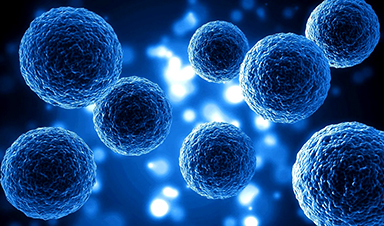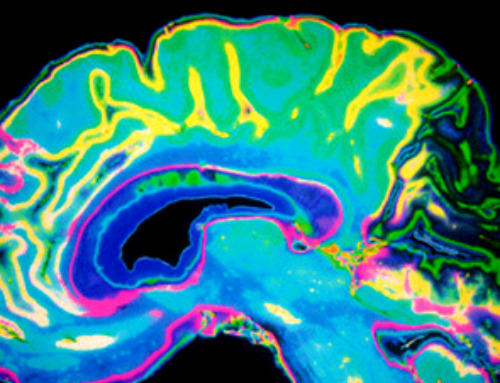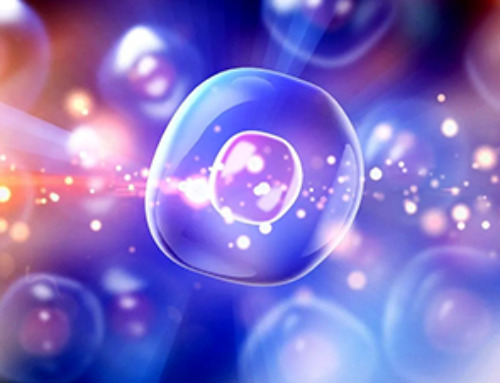Columbia University's research has uncovered a longstanding error in identifying gut stem cells, finding the true stem cells in a different site, which could revolutionize regenerative medicine by applying these findings to other organs.
Two independent studies by Columbia scientists suggest that research into the gut's stem cells over the past 15 years has been marred by a case of mistaken identity: Scientists have been studying the wrong cell.
Both studies were published in the journal Cell. The gut's stem cells are some of the hardest-working stem cells in the body. They work continuously throughout our lives to replenish the short-lived cells that line our intestines. About every four days, these cells—covering a surface about the size of a tennis court—are completely replaced.
Understanding these workaholic stem cells could help scientists turn on less productive stem cells in other organs to repair hearts, lungs, brains, and more. The gut's stem cells were supposedly identified more than 15 years ago in a landmark study.
But using new lineage tracing and computational tools, the Columbia teams, led by Timothy Wang and Kelley Yan, found that these cells are descendants of the gut's true stem cells. The gut's true stem cells are found in a different location, produce different proteins, and respond to different signals.
"The new work is controversial and paradigm-shifting but could revitalize the [entire?] field of regenerative medicine," says Timothy Wang, the Dorothy L. and Daniel H. Silberberg Professor of Medicine.
"We know we're making a lot of waves in the field, but if we're going to make progress, we need to identify the true stem cells so we can target these cells for therapies," says Kelley Yan, the Herbert Irving Assistant Professor of Medicine.
We recently spoke with Kelley Yan and Timothy Wang about the findings and implications.
Why does the gut need stem cells?
KY: What's relevant to this story is a tissue called the intestinal epithelium. This is a single layer of cells that lines the gut and it's composed of different types of cells that help digest food, absorb nutrients, and fight microbes.
Most of the cells live for only about four days before being replaced, so stem cells must create replacements.
What's really remarkable about the intestinal lining is how big it is. If we were to fillet open your intestine and lay it flat, it would cover the surface of a tennis court.
The gut's stem cells may be the hardest-working stem cells in the body.
The gut's stem cells were supposedly identified in 2007, and the discovery was hailed as a breakthrough in stem cell science. What made you think this was a case of mistaken identity?
TW: For the last 17 years, the intestinal stem cell field has assumed that Lgr5, a protein on the cell's surface, is a specific marker for intestinal stem cells. In other words, all Lgr5+ cells are assumed to be stem cells, and all stem cells are believed to be Lgr5+. These Lgr5+ cells were located at the very bottom of glands, or crypts, in the intestinal lining.
However, in the last decade, problems with this model began to appear. Deleting the Lgr5+ cells in mice, using a genetic approach, did not seem to bother the intestine very much, and the Lgr5+ stem cells reappeared over the course of a week. In addition, the intestine was able to regenerate after severe injury, such as radiation-induced damage, even though the injury destroyed nearly all Lgr5+ cells.
KY: By their very definition, stem cells are the cells that regenerate tissues, so these findings created a paradox. Many high-profile papers have evoked different mechanisms to explain the paradox: Some suggest that other fully mature intestinal cells can walk backward in developmental time and regain stem cell characteristics. Others suggest there's a dormant population of stem cells that only works when the lining is damaged.
No one has really examined the idea that maybe the Lgr5+ cells really aren't truly stem cells, which is the simplest explanation.
How did your labs identify the gut's real stem cells?
TW: My lab collaborated with the former chair of Columbia's systems biology department, Andrea Califano, who has developed cutting-edge computational algorithms that can reconstruct the relationships among cells within a tissue. We used single-cell RNA sequencing to characterize all the cells in the crypts, the region of the intestine where the stem cells are known to reside, and then fed that data into the algorithms.
These algorithms revealed the source of "stemness" in the intestine not in the Lgr5+ cellular pool but in another type of cell higher up in the crypts in a region known as the isthmus. After eliminating Lgr5+ cells with radiation or genetic ablation, we confirmed these isthmus cells were the gut's stem cells and able to regenerate the intestinal lining. We didn't find any evidence that other, mature cells could turn back time and become stem cells.
KY: We weren't trying to identify the stem cells as much as we were trying to understand the other cells in the intestine involved in the regeneration of the lining. No one has been able to define these other progenitor cells in the intestine.
We identified a population of cells that were proliferative and marked by a protein called FGFBP1. When we asked how these cells were related to Lgr5+ cells, our computational analysis told us that these FGFBP1 cells give rise to all the intestinal cells, including Lgr5+, the opposite of the accepted model.
My graduate student, Claudia Capdevila, then made a mouse that would allow us to determine which cells—Lgr5+ or FGFBP1+—were the true stem cells. In this mouse, every time the FGFBP1 gene is turned on in a cell, the cell would express two different fluorescent proteins, red and blue. The red would turn on immediately and turn off immediately, while the blue came on a little later and lingered for days.
That allowed us to track the cells over time, and it clearly showed that the FGFBP1 cells create the Lgr5+ cells, the opposite of what people currently believe. This technique, called time-resolved fate mapping, has only been used a few times before, and getting it to work was a pretty incredible achievement, I thought.
How will this affect the stem cell field and the search for stem cell therapies?
TW: This case of mistaken identity may explain why regenerative medicine has not lived up to its promise. We've been looking at the wrong cells.
Past studies will need to be reinterpreted in light of the stem cells' new identity, but eventually it may lead to therapies that help the intestine regenerate in people with intestinal diseases and possible transplantation of stem cells in the future.
KY: Ultimately, we hope to identify a universal pathway that underlies how stem cells work, so we can then apply the principles we learn about the gut to other tissues like skin, hair, brain, heart, lung, kidney, liver, etc.
It's also thought that some cancers arise from stem cells that have gone awry. So, in understanding the identity of the stem cell, we might be able to also develop novel therapeutics that can prevent the development of cancer.
That's why it's so critical to understand what cell underlies all of this.
References: "Time-resolved fate mapping identifies the intestinal upper crypt zone as an origin of Lgr5+ crypt base columnar cells" by Claudia Capdevila, Jonathan Miller, Liang Cheng, Adam Kornberg, Joel J. George, Hyeonjeong Lee, Theo Botella, Christine S. Moon, John W. Murray, Stephanie Lam, Ruben I. Calderon, Ermanno Malagola, Gary Whelan, Chyuan-Sheng Lin, Arnold Han, Timothy C. Wang, Peter A. Sims and Kelley S. Yan, , Cell.
DOI: 10.1016/j.cell.2024.05.001
"Isthmus progenitor cells contribute to homeostatic cellular turnover and support regeneration following intestinal injury" by Ermanno Malagola, Alessandro Vasciaveo, Yosuke Ochiai, Woosook Kim, Biyun Zheng, Luca Zanella, Alexander L.E. Wang, Moritz Middelhoff, Henrik Nienhüser, Lu Deng, Feijing Wu, Quin T. Waterbury, Bryana Belin, Jonathan LaBella, Leah B. Zamechek, Melissa H. Wong, Linheng Li, Chandan Guha, Chia-Wei Cheng, Kelley S. Yan, Andrea Califano and Timothy C. Wang, , Cell.
DOI: 10.1016/j.cell.2024.05.004
News
Gold Nanoclusters Could Supercharge Quantum Computers
Researchers found that gold “super atoms” can behave like the atoms in top-tier quantum systems—only far easier to scale. These tiny clusters can be customized at the molecular level, offering a powerful, tunable foundation [...]
A single shot of HPV vaccine may be enough to fight cervical cancer, study finds
WASHINGTON -- A single HPV vaccination appears just as effective as two doses at preventing the viral infection that causes cervical cancer, researchers reported Wednesday. HPV, or human papillomavirus, is very common and spread [...]
New technique overcomes technological barrier in 3D brain imaging
Scientists at the Swiss Light Source SLS have succeeded in mapping a piece of brain tissue in 3D at unprecedented resolution using X-rays, non-destructively. The breakthrough overcomes a long-standing technological barrier that had limited [...]
Scientists Uncover Hidden Blood Pattern in Long COVID
Researchers found persistent microclot and NET structures in Long COVID blood that may explain long-lasting symptoms. Researchers examining Long COVID have identified a structural connection between circulating microclots and neutrophil extracellular traps (NETs). The [...]
This Cellular Trick Helps Cancer Spread, but Could Also Stop It
Groups of normal cbiells can sense far into their surroundings, helping explain cancer cell migration. Understanding this ability could lead to new ways to limit tumor spread. The tale of the princess and the [...]
New mRNA therapy targets drug-resistant pneumonia
Bacteria that multiply on surfaces are a major headache in health care when they gain a foothold on, for example, implants or in catheters. Researchers at Chalmers University of Technology in Sweden have found [...]
Current Heart Health Guidelines Are Failing To Catch a Deadly Genetic Killer
New research reveals that standard screening misses most people with a common inherited cholesterol disorder. A Mayo Clinic study reports that current genetic screening guidelines overlook most people who have familial hypercholesterolemia, an inherited disorder that [...]
Scientists Identify the Evolutionary “Purpose” of Consciousness
Summary: Researchers at Ruhr University Bochum explore why consciousness evolved and why different species developed it in distinct ways. By comparing humans with birds, they show that complex awareness may arise through different neural architectures yet [...]
Novel mRNA therapy curbs antibiotic-resistant infections in preclinical lung models
Researchers at the Icahn School of Medicine at Mount Sinai and collaborators have reported early success with a novel mRNA-based therapy designed to combat antibiotic-resistant bacteria. The findings, published in Nature Biotechnology, show that in [...]
New skin-permeable polymer delivers insulin without needles
A breakthrough zwitterionic polymer slips through the skin’s toughest barriers, carrying insulin deep into tissue and normalizing blood sugar, offering patients a painless alternative to daily injections. A recent study published in the journal Nature examines [...]
Multifunctional Nanogels: A Breakthrough in Antibacterial Strategies
Antibiotic resistance is a growing concern - from human health to crop survival. A new study successfully uses nanogels to target and almost entirely inhibit the bacteria P. Aeruginosa. Recently published in Angewandte Chemie, the study [...]
Nanoflowers rejuvenate old and damaged human cells by replacing their mitochondria
Biomedical researchers at Texas A&M University may have discovered a way to stop or even reverse the decline of cellular energy production—a finding that could have revolutionary effects across medicine. Dr. Akhilesh K. Gaharwar [...]
The Stunning New Push to Protect the Invisible 99% of Life
Scientists worldwide have joined forces to build the first-ever roadmap for conserving Earth’s vast invisible majority—microbes. Their new IUCN Specialist Group reframes conservation by elevating microbial life to the same urgency as plants and [...]
Scientists Find a Way to Help the Brain Clear Alzheimer’s Plaques Naturally
Scientists have discovered that the brain may have a built-in way to fight Alzheimer’s. By activating a protein called Sox9, researchers were able to switch on star-shaped brain cells known as astrocytes and turn them into [...]
Vision can be rebooted in adults with amblyopia, study suggests
Temporarily anesthetizing the retina briefly reverts the activity of the visual system to that observed in early development and enables growth of responses to the amblyopic eye, new research shows. In the common vision [...]
Ultrasound-activated Nanoparticles Kill Liver Cancer and Activate Immune System
A new ultrasound-guided nanotherapy wipes out liver tumors while training the immune system to keep them from coming back. The study, published in Nano Today, introduces a biodegradable nanoparticle system that combines sonodynamic therapy and cell [...]





















